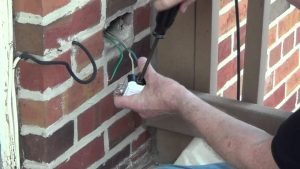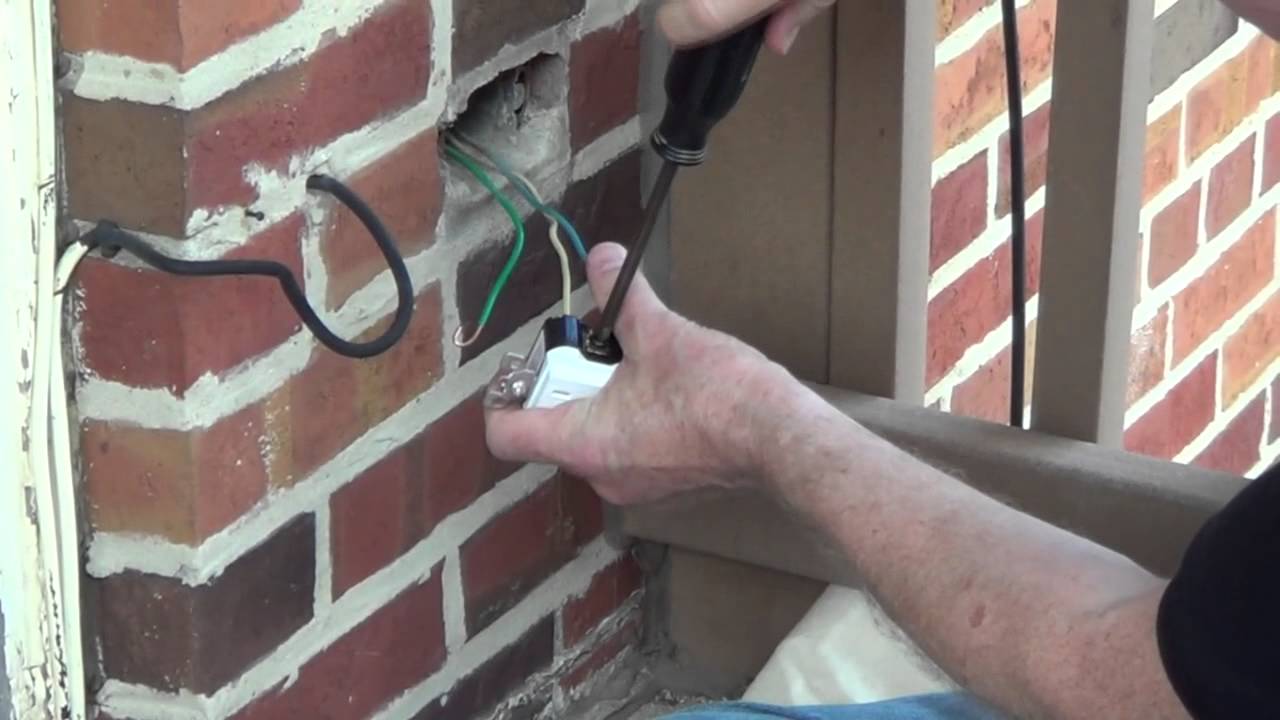Want to have some cool music in your backyard during your free times? Well, as lovely as that may sound, you need to make sure that your audio system is properly set up for this. To achieve this, you’ll have to run some wires from the inside of your home to the outside. If you are planning on running these wires but do not know how to do it, then this article is for you.
To successfully run wires from the inside to the outside, you’ll have to mark specific areas on your exterior wall and then drill holes in the wall using a drill. When you are done drilling the holes, run the wires through the holes and seal the areas around the wire in the hole.
It is important to consider the type of wire that you’ll be running from inside to outside in advance. This will help you decide how and where to drill the holes so that you don’t run into any complications in the process of running the wires. In this article, I’m going to talk about some of the factors you need to consider before attempting to run the wires as well as how to even run the wires correctly. So if ready to learn, read on for more information.

Why You Should Run Wires Correctly
If you are a newbie to sound systems, you might wonder what is the big deal about running wires from your room to the outside.
Well, although running speakers might sound simple, there are some things you need to get right before you can have that high-quality sound that will sound good in your ears.
If you go wrong during the setup or running process, you sure are not going to like what you hear.
Even if you will get the sound right, there are a whole lot of challenges in your way that you need to address before running the speakers.
Speaker wires basically transmit audio signals from a source to the speakers. If your speakers are passive, the wires may transmit power to those speakers as well.
They are made in such a way that their main conducting materials which are metallic in nature are protected from external conditions by the insulating material around them.
If you do not run your speaker wires well, you’ll most likely damage the insulating material, let’s the PVC coating, and then expose the wire to harsh conditions such as sun or heat.
The wires will corrode in no time if they are not well protected.
Changes in external temperature can also affect the wires in the long and you’ll have to replace them sooner or later.
Factors to Consider Before Running Wires from Inside to Outside
In order to avoid unnecessary mistakes when it comes to drilling and running speaker wires through your exterior walls, you’ll need to carefully consider certain factors before you attempt to run the speaker wires.
I’m sure you will not like to drill your walls, run some wires through them and then suddenly realize that you’ve made a mistake. That will be disastrous and a waste of time and energy.
To ensure that everything goes according to plan, here are a few factors for you to consider before you run your speaker wires outside:
- The type of speaker wire
- Where to place your speakers
- Where to drill holes
Type of Speaker Wire
Speaker wires are manufactured the same. They are manufactured with different materials and also have different diameters or gauges for short.
Depending on how long you want to run your wires, you may have to use wires of different gauges in order not to lose significant sound signals during the audio transmitter from the source to the speakers.
You need to also consider the type of wire material and how it reacts with temperature, heat, rain, and moisture so that you can use the right type of wire for your work.
Where to Place Your Speakers
Imagine not having enough wire to connect to your speakers after having through the hassle of drilling and running some wires outside. That wouldn’t be good right?
It is therefore important to know how many speakers you’ll be using outdoors in the first place and then when you are even going to place them.
Make a layout of all the locations of your speakers before you attempt to run any wire outside of your room.
If you’ll be using stereo speakers, that is left and right channels, you need to plan all these in advance and make sufficient wires available for the project.
Also Read:
How to run speaker wire outside underground properly
Where to Drill Holes
Your exterior walls can have many other lines running within them that you can not see with your eyes.
However, if you know your house very well, you’ll have an idea of where utility lines such as pipes and electrical cables are in the wall.
Make sure you avoid these lines as drill holes for running your speaker wires. If you are not familiar with the wall, you may have to ask the owners of the home or an expert for advice.
Also, make sure to avoid clear obstructions such as picture frames in order to make your work easier.
Besides the utility lines, you also consider how high your drilled holes should be above the ground.
As a rule of thumb, don’t drill holes that are lower than two feet below the ground. Always aim for areas beyond 2 feet from the ground level.
If your house has some water beneath it, the water can easily get to the wires and cause them to corrode. Similarly, insects are likely to have a free day around your speakers and will damage the insulation around the wire in the long.
For the safety of your speaker wire’s sake, do not run the cables under windows.
As you open and close your windows, there is the likelihood that your window frames will press down the speaker wires at certain parts. After some time, your wires will eventually get damaged and you may have to replace them at a cost.
How to Run Speaker Wires Through an Exterior Wall
After considering all the factors that I’ve discussed above and finalizing your decisions, you can go ahead and begin to run the speaker wires from inside to outside.
If you carefully planned it out, the process should not be that difficult.
You only need a handful of tools, wires, and sealant. For the tools, you’ll need a drill and then you will need a sealant to seal the holes to prevent insects from accessing your room.
So, if you are ready to see how to run the wires, let’s get started.
- Mark the locations of the hole that you intend to drill from the interior side wall.
- Mark the corresponding locations of the hole on the outer side of the wall.
- Use the drill to drill the holes from the interior side of the wall. Just when you are about to get to the outer side of the wall, stop drilling and go outside to drill from the exterior side to complete the hole.
- Move to the next marking and drill the hole from the interior side of the wall. Move out to complete the drilling on the outer side.
- When all holes are completely drilled, pass your speaker wires into them and that will be it for the running process.
You should remember that when it comes to drilling a wall, there is going to be a lot of dust along the way.
To keep your room neat during the drilling process, you can place a piece of cloth on the floor underneath the markings so that the dust from the wall collects on it.
Since you’ll be drilling both the interior and exterior parts of your wall, getting someone to help you on the other side will be a good option. This will also help when it comes to running the speaker wires through the holes.
Additionally, use the sealant to seal the hole so that insects do not use the holes as passages to your room.
Final Thoughts
Outdoor speakers can a great addition to your audio experience. In most cases, you’ll have to run the speaker wires from the inside to the outside through a wall.
Before attempting to drill holes in your exterior wall for the speaker wires, you will have to consider some key factors which I have explained in this article.
Use the right speaker wire for the job and consider the locations of utility lines running within the wall.
If you plan out all of these things carefully, running the speaker wire will be as easy as ABC for you.
You can then enjoy music outdoors or even party around with your family and friends.
- Optoma UHD50X vs UHD60 4K UHD Projectors Detailed Comparison - June 27, 2023
- Optoma CinemaX Pro vs P2 Projectors: What is the Difference? - June 27, 2023
- DLP vs Laser Projectors: What is the Difference? - June 27, 2023

